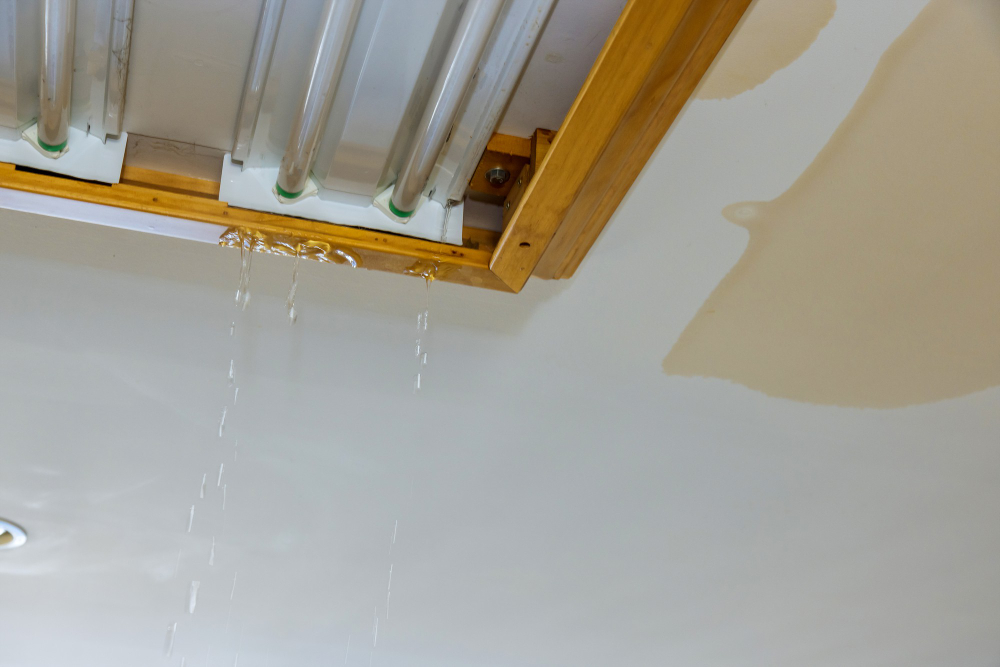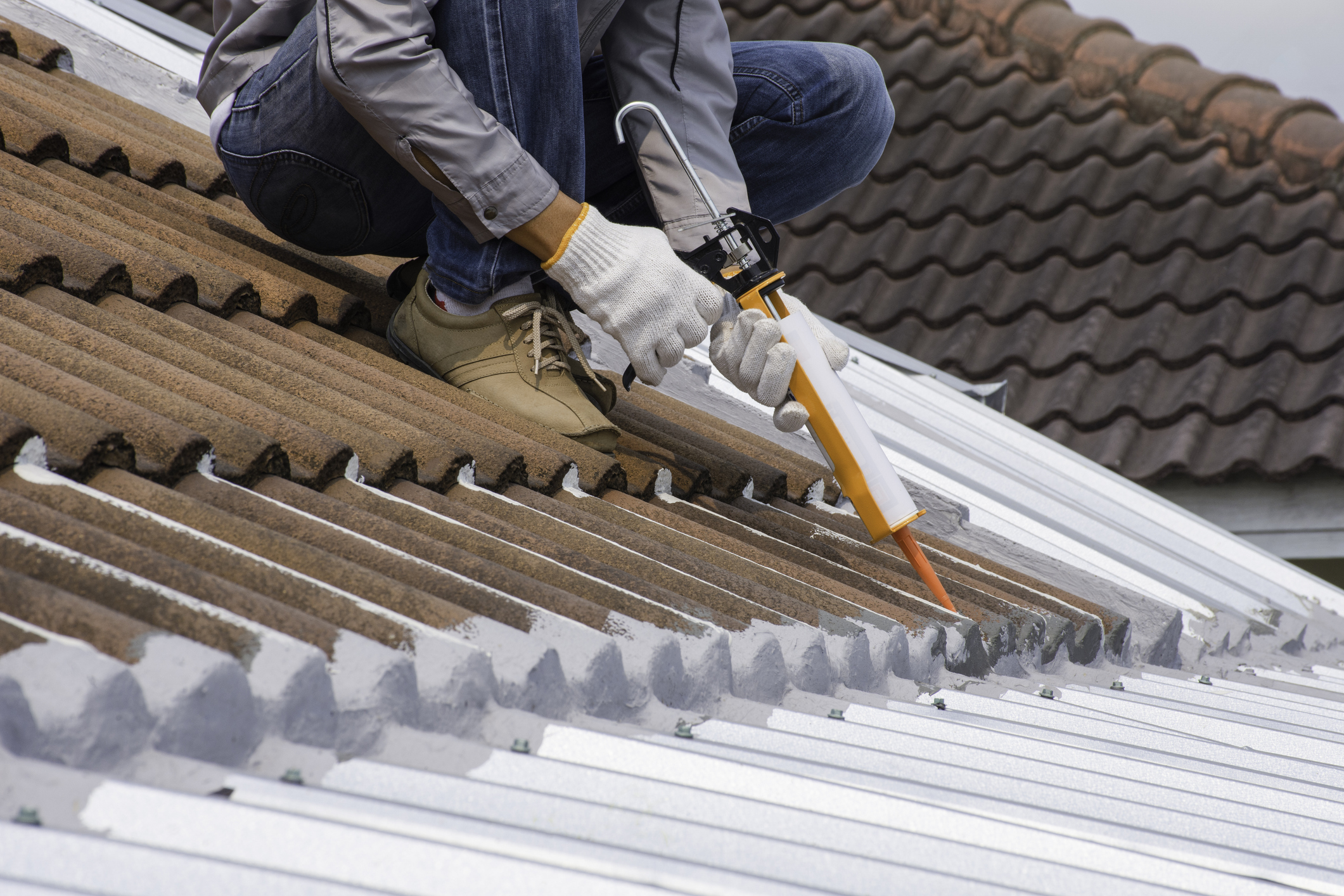A roof leak can start small but escalate quickly into major structural damage, mold growth, and expensive repairs. Knowing exactly what causes leaks, and how to detect them early can save you thousands and protect your home’s value.
In this guide, we’ll take a closer look at the most common causes of roof leaks, what warning signs to watch for, and how to prevent them.
What Are the Common Roof Leak Causes?
1. Damaged or Missing Shingles
Shingles are your roof’s shield against the elements. Over time, wind, hail, UV rays, and temperature fluctuations can cause them to crack, curl, or lose granules. Missing shingles leave exposed spots where water can penetrate the underlayment and reach the roof deck. Severe storms can even rip shingles off entirely.
Detailed Tip: Inspect your roof after every major storm. Look for color differences, lifted edges, and pieces of shingles in your yard or gutters. Early replacement of a few shingles can prevent much bigger repairs later.
2. Weathered or Loose Flashing
Flashing is the protective metal strip placed around roof penetrations like chimneys, skylights, and vent pipes and along valleys to direct water away from vulnerable joints. Over time, harsh weather can warp, loosen, or corrode this material. Even a small separation in flashing creates a path for moisture to infiltrate your home.
Detailed Tip: Make a habit of checking flashing during annual roof maintenance. If you spot bent edges, corrosion, or missing sealant, arrange for prompt repairs to prevent leaks from spreading.
3. Blocked or Faulty Gutters
When gutters can’t properly channel rainwater because they’re clogged with leaves, dirt, or other debris, water often spills over and seeps into areas it shouldn’t including the roof edge and fascia boards. In winter, blockages can worsen ice formation, further stressing the roof structure.
Detailed Tip: Schedule seasonal gutter cleaning and inspect downspouts for clear water flow. Adding gutter guards can help reduce buildup and keep water moving away from your home.
4. Leaky Skylights
Skylights brighten your home, but they also require perfect sealing to stay leak-free. Over the years, weather exposure and temperature changes can break down the seals, while poor installation can leave tiny gaps where rain can enter.
Detailed Tip: Inspect the interior ceiling around skylights for water rings or peeling paint. Outside, check that the flashing and seals around the skylight remain intact and free from cracks.
5. Cracked or Deteriorated Vent Booting
Vent pipes, which allow air to escape from plumbing systems, penetrate through the roof and are sealed with rubber or metal “boots.” UV exposure, temperature extremes, and age can cause the rubber to dry out and crack, creating a leak point.
Detailed Tip: When replacing shingles, inspect vent boots as part of the project. Rubber boots typically need replacement every 10–15 years.
6. Poorly Sealed Roof Valleys
Roof valleys the lines where two slopes meet, carry large amounts of rainwater. If the shingles or valley lining are damaged or the sealant has deteriorated, water can flow sideways into the roof rather than down into gutters.
Detailed Tip: Valleys should be inspected after heavy storms and during seasonal maintenance. Watch for loose shingles, exposed underlayment, or visible gaps.

7. Ice Dams in Winter Climates
In snowy conditions, heat escaping from the attic can melt snow on the upper roof. The water then runs down and refreezes at the colder roof edge, forming an ice dam. This ice traps additional water behind it, which can push under shingles and cause leaks that often go unnoticed until interior damage appears.
Detailed Tip: Adequate attic insulation and ventilation are key to avoiding ice dams. After heavy snowfall, use a roof rake to clear the lower roof edge before ice can build up.
8. Roof Materials Nearing the End of Their Lifespan
All roofing materials eventually wear out. Asphalt shingles may last a couple of decades, while tile, slate, and metal roofs can last several decades more. As materials age, they lose flexibility, coatings, and water resistance, making them more susceptible to cracking, curling, or other damage that leads to leaks.
Detailed Tip: If your roof is approaching its expected lifespan, arrange for a professional inspection. They can tell you whether targeted repairs will suffice or if a full replacement will be more cost-effective in the long run.
9. Poor Roof Installation
Even a brand-new roof can leak if it was not installed correctly. Common mistakes include improper nail placement, missing flashing, and uneven underlayment. Poor installation often leads to early shingle failure and chronic leaks.
Detailed Tip: Always hire licensed, experienced roofers and request references before installation. Poor workmanship is far more expensive to fix later.
10. Chimney Deterioration
Brick chimneys are prone to cracking and mortar erosion, which can let water inside. Damaged chimney caps or flashing can also allow rain to penetrate directly into the home.
Detailed Tip: Have your chimney inspected annually for cracks, missing mortar, and rust stains. Repointing or sealing early prevents bigger problems later.
Quick Reference: Roof Leak Causes
| Cause | Warning Signs | Prevention Tips |
| Damaged or Missing Shingles | Bare spots, lifted edges, shingles in yard or gutters | Inspect after storms, replace damaged shingles immediately |
| Worn or Cracked Flashing | Rust, lifted edges, gaps near chimneys/vents | Inspect annually, reseal or replace damaged flashing |
| Clogged Gutters | Overflow during rain, water pooling at foundation | Clean twice a year, install gutter guards |
| Skylight Leaks | Water stains around skylight edges, bubbling paint | Check seals regularly, reseal when needed |
| Cracked Vent Booting | Brittle or split rubber at pipe bases | Replace boots every 10–15 years |
| Poorly Sealed Roof Valleys | Water stains along valley lines, loose shingles | Inspect valleys after storms, repair loose shingles/sealant |
| Ice Dams | Icicles at roof edge, leaks after snow melt | Improve attic insulation & ventilation, remove snow buildup |
| Aging Roof Materials | Curling shingles, faded color, brittle texture | Schedule inspection as roof nears end of life |
| Poor Installation | Early leaks after installation, uneven shingles | Hire licensed, experienced roofers |
| Chimney Deterioration | Cracks in mortar, missing chimney cap, rust stains | Annual chimney inspection & maintenance |
Conclusion
Roof leaks often start with small, preventable problems. By understanding the most common causes and addressing them early, you can extend the life of your roof, avoid expensive water damage, and keep your home safe and dry.


